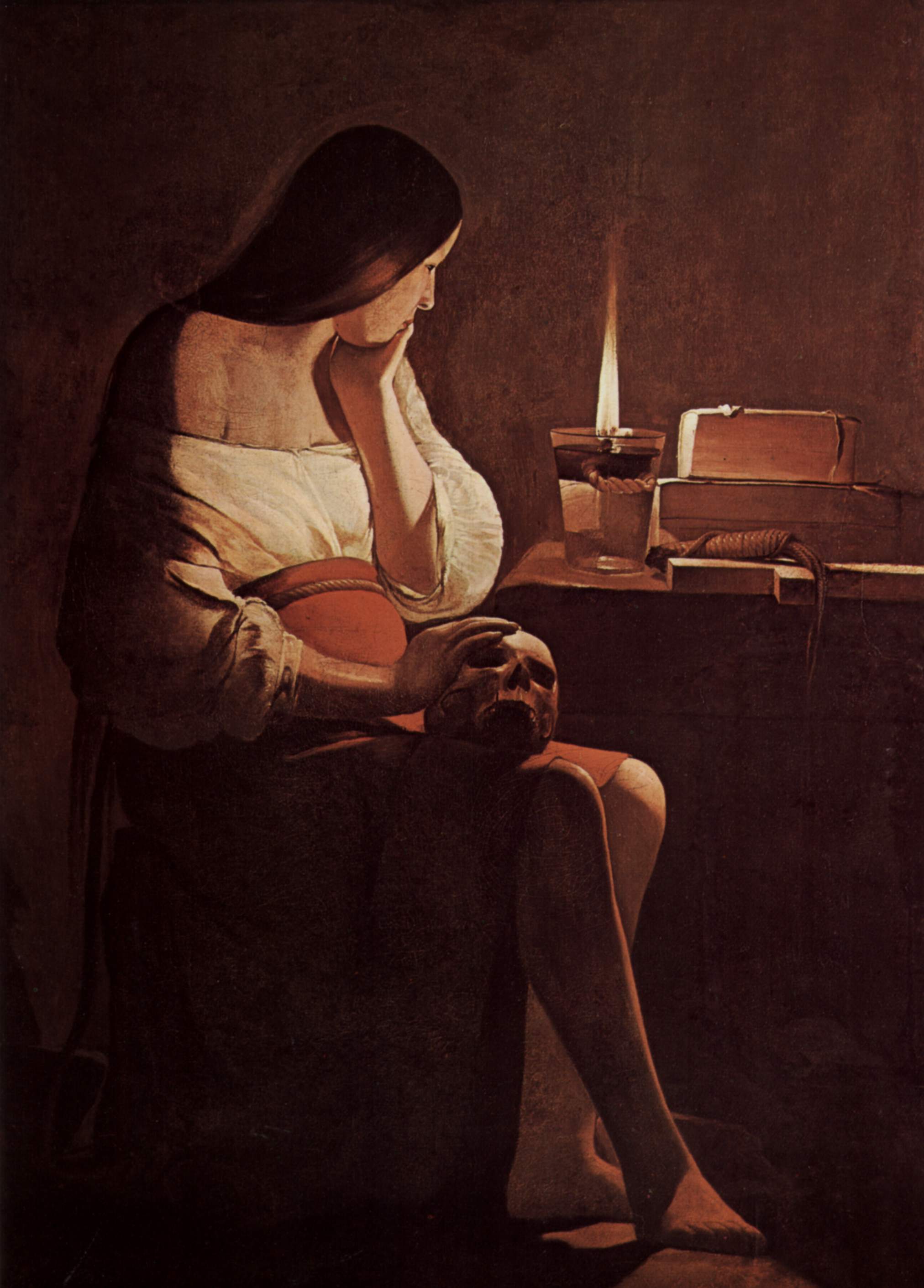Georges de la Tour and the Fashions of Art History
By Magdalena Polak
Magdelens with the Smoking Flame
The Prado Museum in Madrid is currently having a solo exhibition on French artist Georges de la Tour (1595-1652). Born and active in the dukedom of Lorraine, de la Tour is a quintessential poster child of how, in the history of Art, fame is a matter of fashion. Extremely successful in his lifetime, he eventually even advanced to become court painter to Louis XIII of France. His paintings would be collected by the powerful Cardinal Richelieu and he enjoyed a reputation exceeding way beyond the boarders of France. Upon his death, his mastership was unquestioned. Only to then be forgotten.
De la Tour would remain a nonentity for roughly 250 years, and to such an extent that the French scholar Alexandre Joly mispelled his name in his article on the artist, the title reading „Du Mesnil-La Tour. Painter.“ De la Tour’s name only started to reincrease in value upon the publication of one famous art historian named Hermann Voss in 1915, in which he identified three paintings, „The Apparition of the Angel", "Saint Peter's Denial“ and the unsigned „Newborn Child“ as being the works of one and the same artist, Georges du Menil de La Tour.
St Gerome Reading
The Apparation of the Angel or Dream of Saint Joseph
The result was immediate. The paintings perfectly represent de la Tour’s style and his preference for drawing night scenes and catching the atmosphere of both intimacy and solitude, the two themes that seemed to have interested him most. Painted in an almost sculptural fashion, his subjects are depicted in an immobile manner without ever any noticeable background that might tell you more about the subjects, giving them an anonymity. The lack of halos for his depictions of saints further creates an ambiguity of his subjects’ true identity. In the case of „The Newborn“, it might very well just be two ordinary women watching a common baby sleep. This ambiguity, as well as his interest in light, reminds one of Caravaggio, whose artistic fame had never decreased after his death.
The theme of ambiguity does work for both his art as well as his artistic persona. The fact that de la Tour was forgotten for such a long time results in little to no information about his background and personal life. This aura of mystery was equally intriguing to the public of the 20th century as his sculptural painting style, which did accommodate to a certain extent the beginning of Cubism, thus drawing a link to Moderne.
Georges de la Tour’s artistic skills were the same before and after the essay written by Hermann Voss, and yet it needed one art historian of respected reputation to put his seal of approval in order to for the artist to reemerge from neglect. Art history focusses on the narrative of the development of art. In truth, it has little place for the distinction between „talented“ and „untalented“ artists and „good“ or „bad“ art. Recognising this, we may also recognize that there are a good many artists who created works of lasting worth, who have been forgotten in Art History, probably largely due to the bad luck. How central to the study of Art History would Michelangelo have been had he lived in South America? There is little to no proof that de la Tour ever travelled to Italy, nor had any contact with any Caravaggisti, and yet it is clear that he was interested by the same themes. He is also often compared to the Netherlandish 17th century artist Hendrick Terbrugghen. It is therefore hard for art historians to name Georges de la Tour as yet another example of Caravaggio’s lasting impact on the history of art, and his geographical location makes it impossible to put him in the same category as his Netherlandish contemporaries. It seems that it is due to this difficulty of attributing him to one group that brought about his artistic disregard for such a long time.
St Gerone Reading
image credits:




